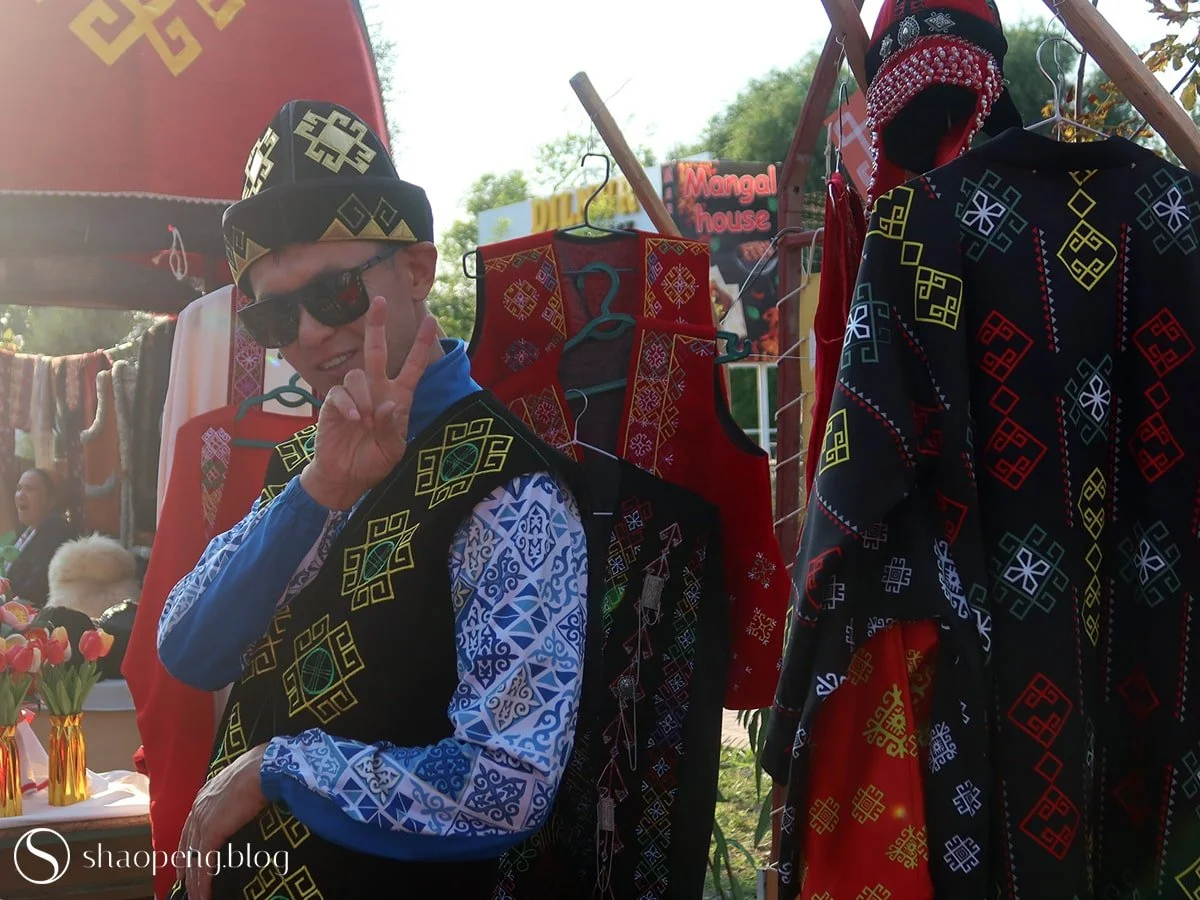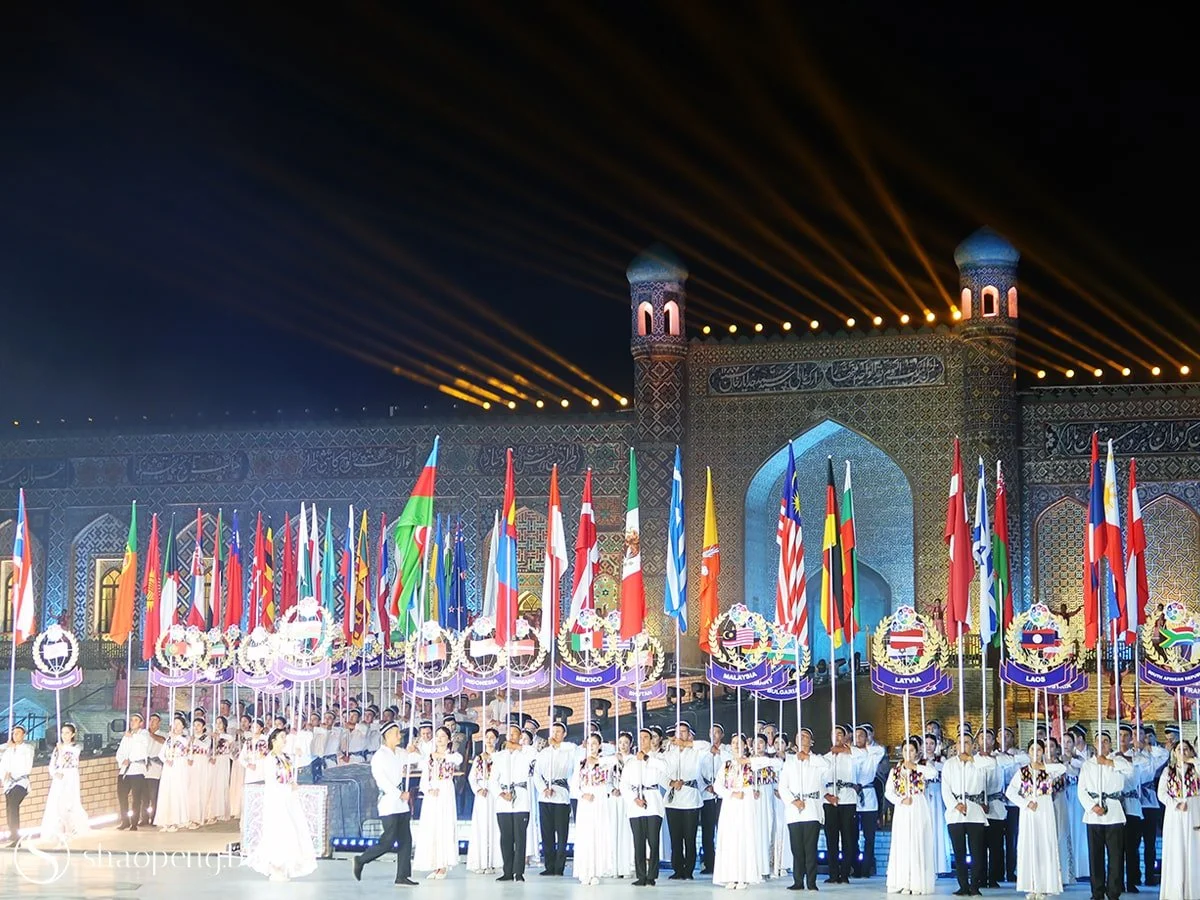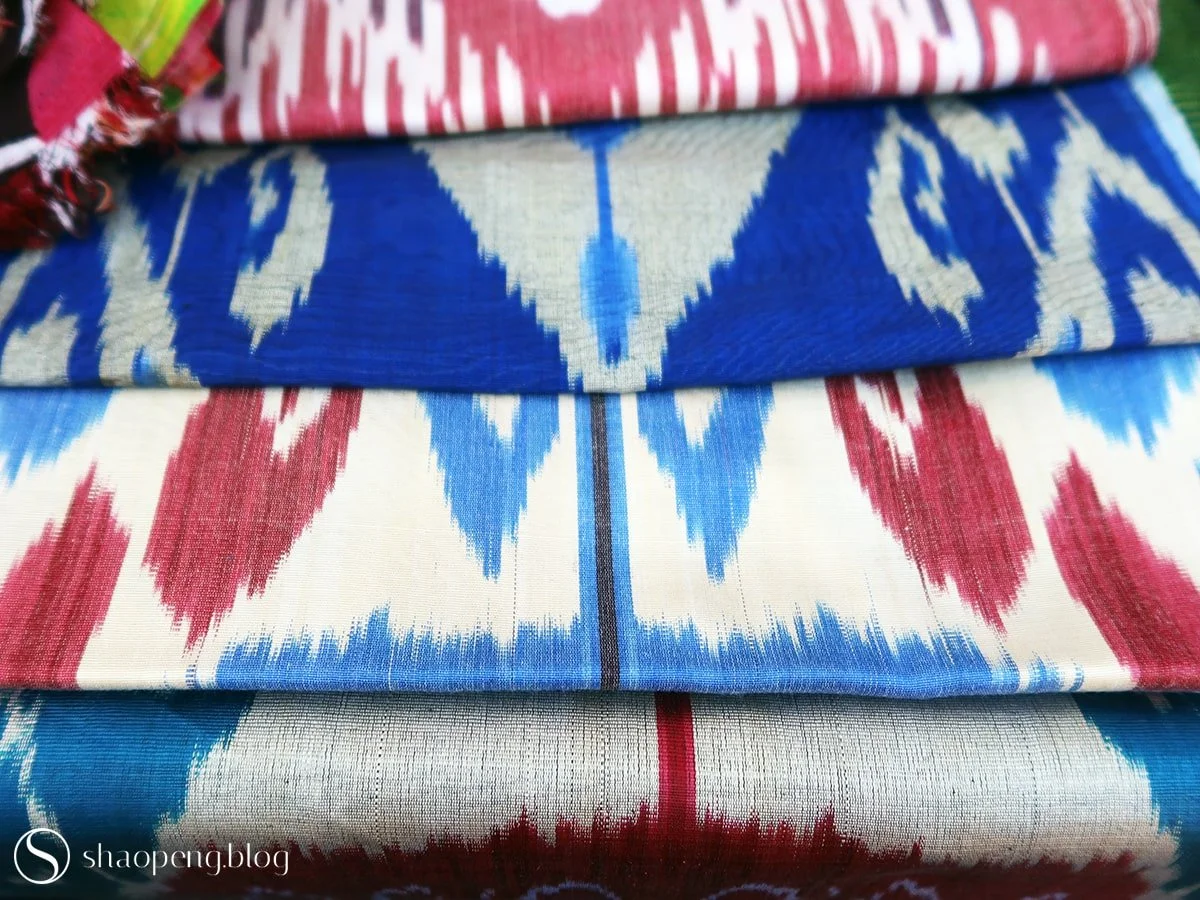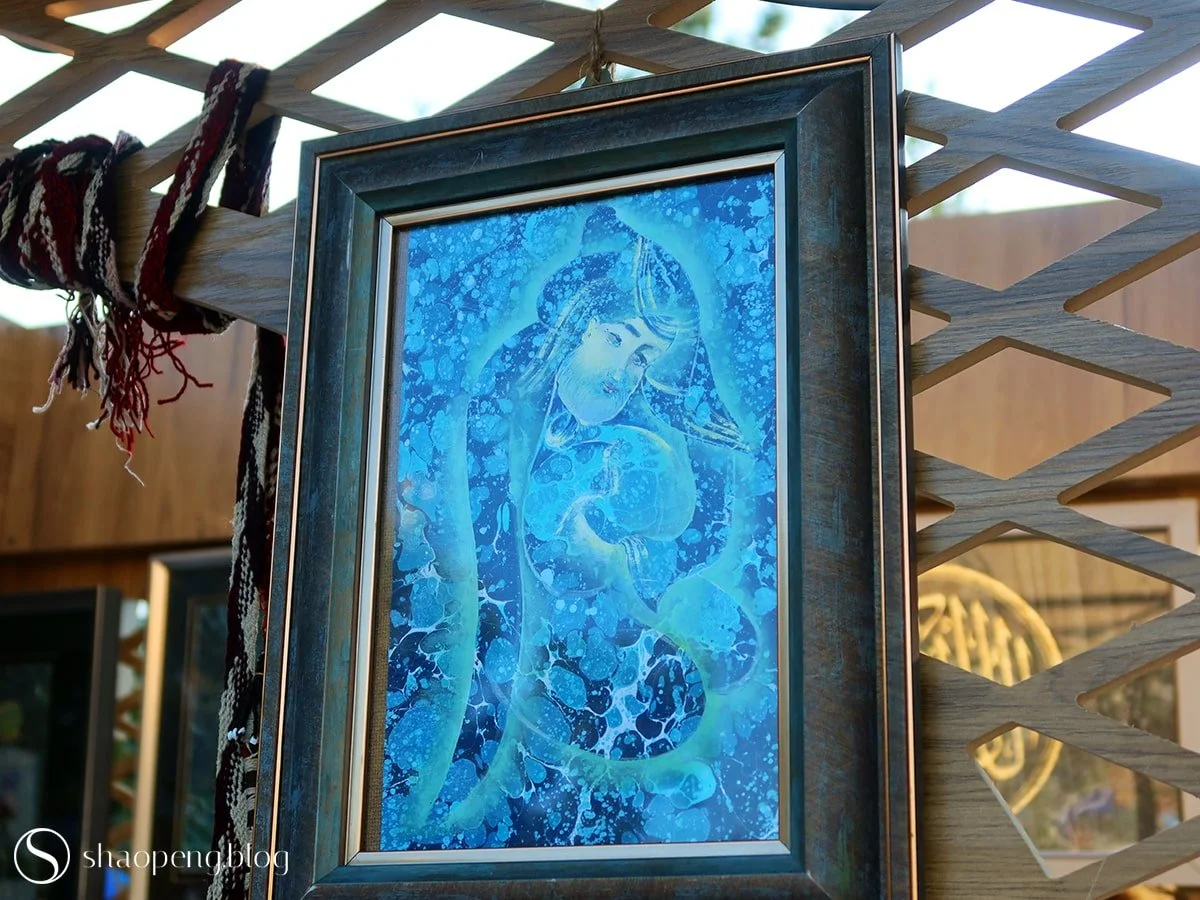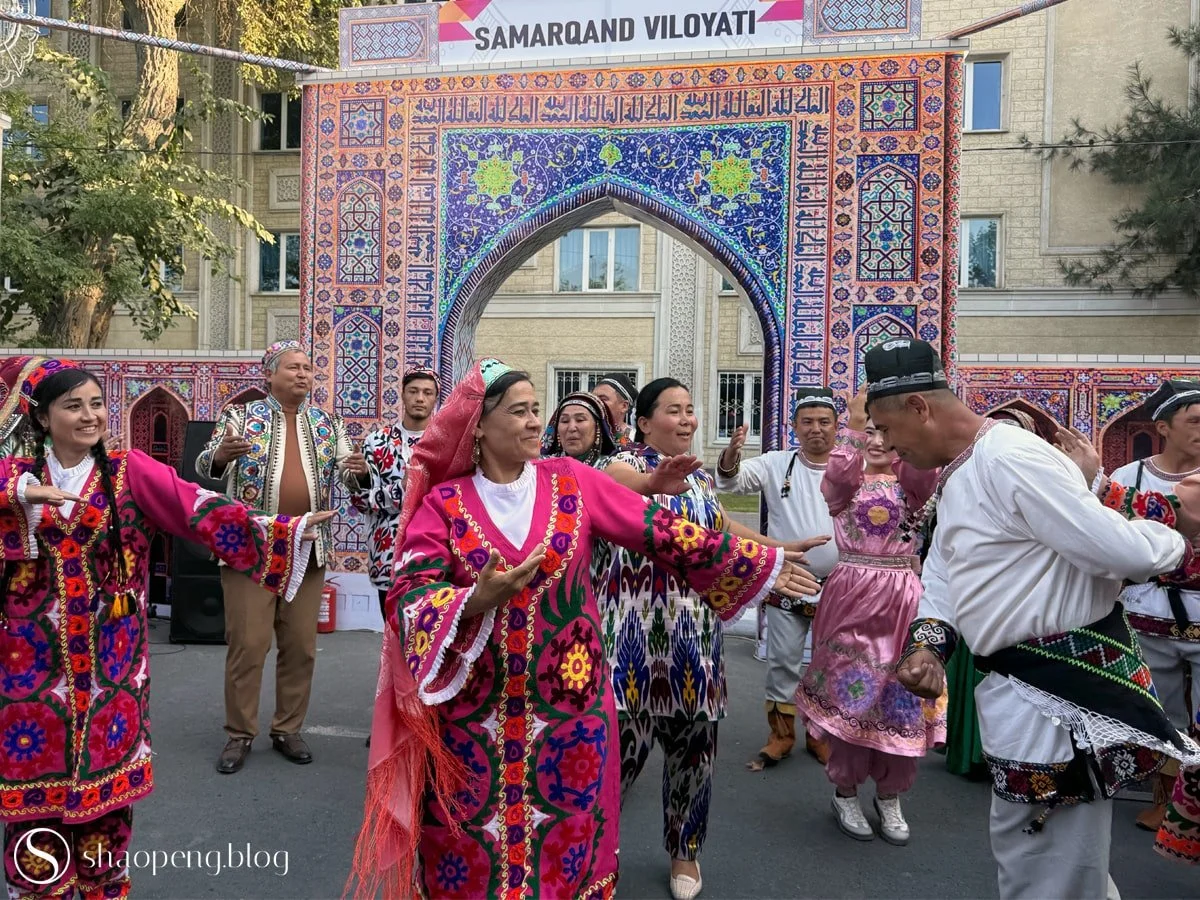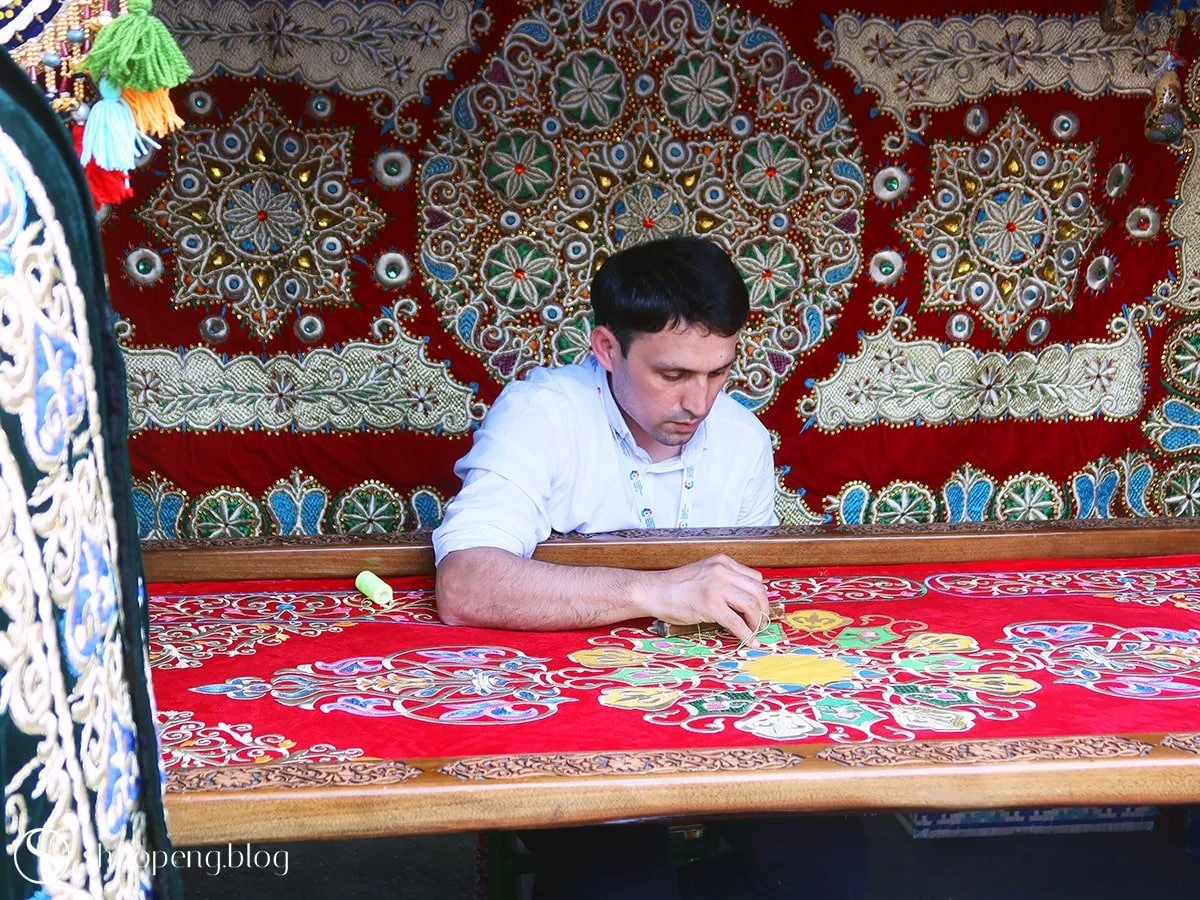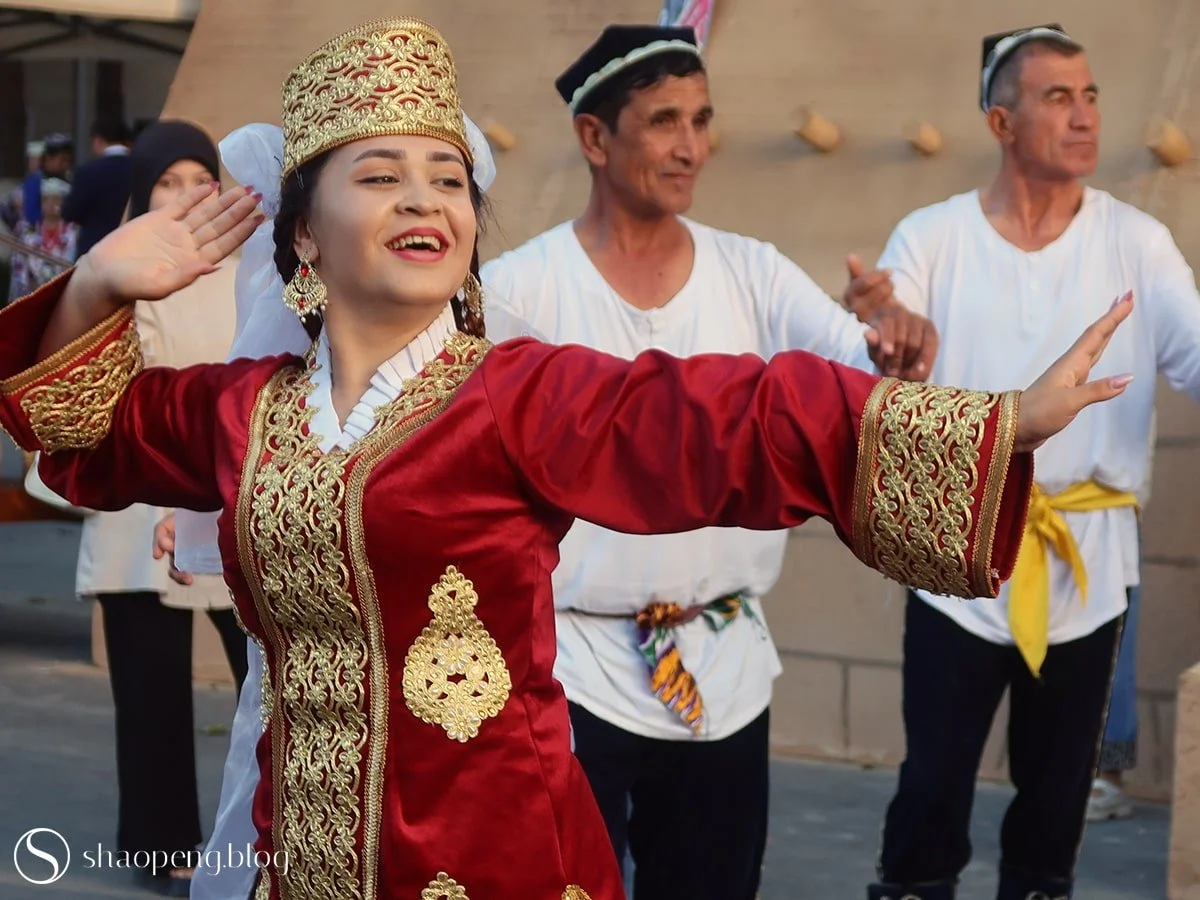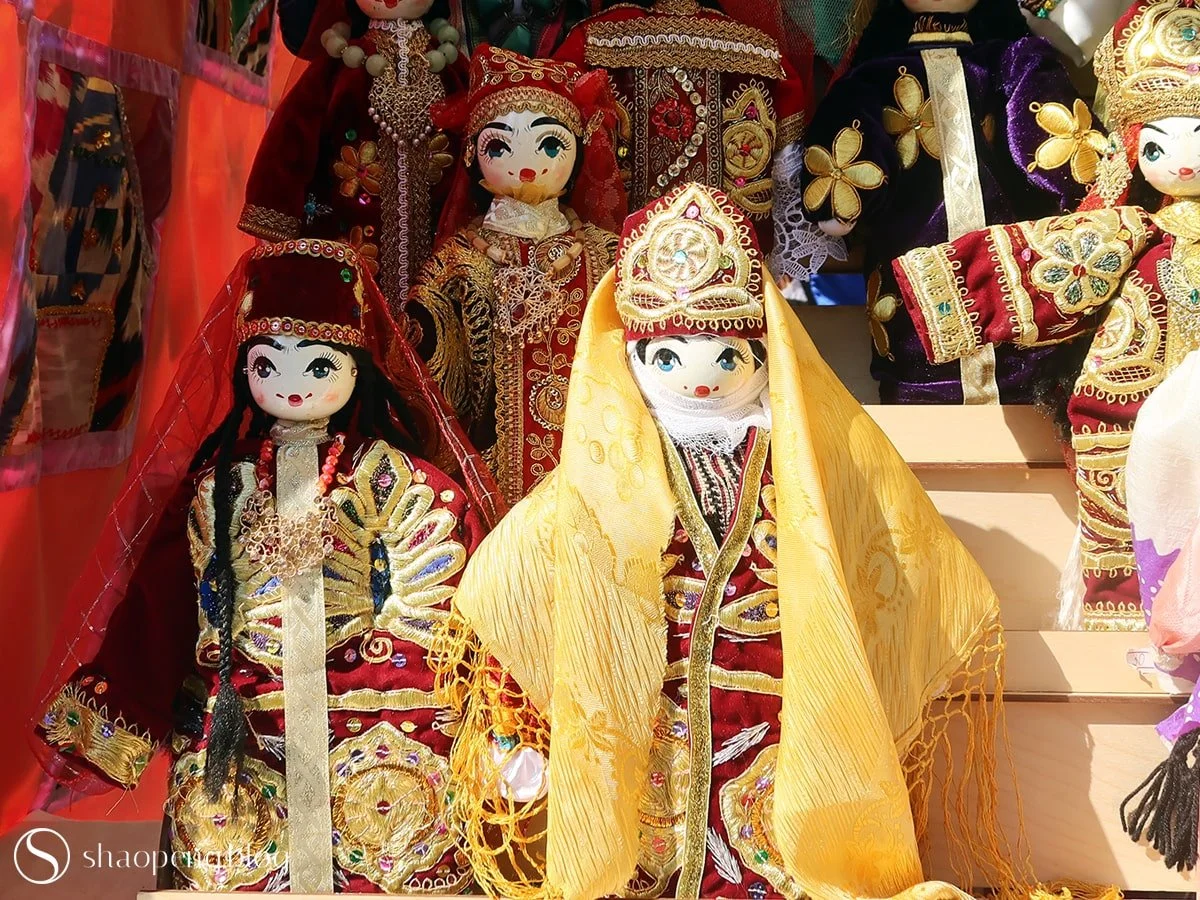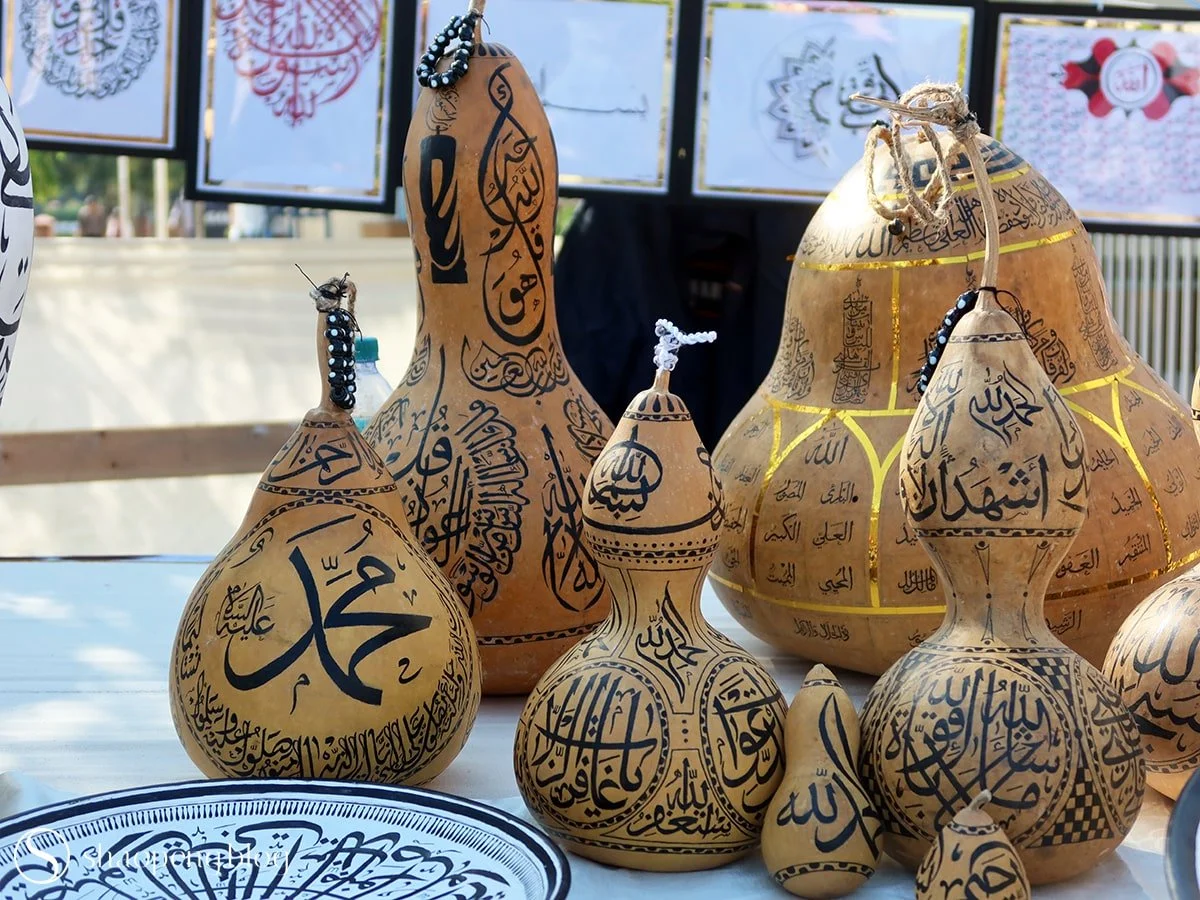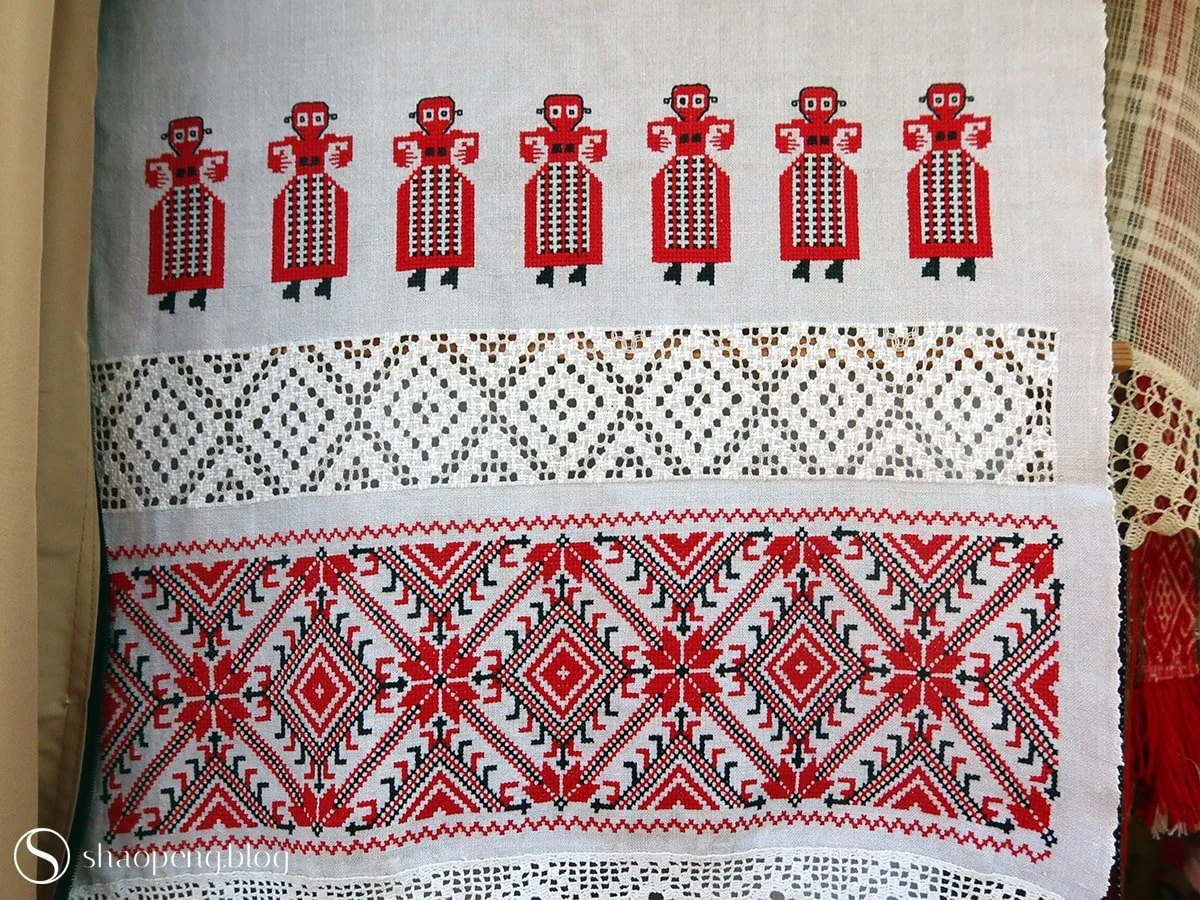Wander in Kokand: International Festival of Handicrafts
Kokand’s International Festival of Handicrafts is a crossroads where Uzbekistan’s timeless craft heritage meets the artistic rhythms of Central Asia and beyond.
Sense of Wander: ★★★★★
Traditional tubeteika hats in a kaleidoscope of colours and designs.
KOKAND, Uzbekistan — For three days this September, the streets of Kokand become a crossroads where artisans from across Uzbekistan and beyond gathered for the International Festival of Handicrafts, transforming this ancient Silk Road city into an open-air museum of creativity.
First launched in 2019, this biennale festival is Uzbekistan’s first large-scale event devoted to traditional crafts. But why Kokand?
Once the capital of the Kokand Khanate (1710–1867), the city was not only a major economic centre of Central Asia but also a hub of artistry famed for its cotton and silk fabrics, woodwork, paper, jewellery, leather and metal goods, and even horse carriages. Today, nearby Rishtan remains renowned for its ceramics, while Margilan continues to be celebrated for its centuries-old mastery of silk weaving. It’s no wonder Kokand has earned the title of “World Craft City” from the World Crafts Council.
As a lover of traditional crafts, I feel privileged to have attended this year’s festival, joining nearly a thousand Uzbek craftsmen and more than 300 artisans from over 70 countries.
A week before arriving, I dreamt of myself at the foot of the Khudayar Khan Palace, surrounded by flowing silks and the hum of artisans at work. Yet, experiencing the festival in person was nothing like the dream — it was richer, more textured, and filled with a deeper sense of wonder.
At the International Festival of Handicrafts, the streets come alive with a fascinating array of local and international crafts.
The opening ceremony of Kokand’s International Festival of Handicrafts took place against the majestic backdrop of the Khudayar Khan Palace.
Traditional folk dances and songs flowed one after another, showcasing the richness and beauty of Uzbekistan’s cultural heritage.
During the International Festival of Handicrafts, a fashion show brought together emerging and established designers, showcasing collections inspired by folk traditions.
This year’s Festival of Handicrafts unfolds along two streets just south of the Khudayar Khan Palace: one devoted to regional crafts from across Uzbekistan, the other showcasing works by artisans from Central Asia and beyond.
Passing through the main gate, you’re greeted by booths marked “Qo‘qon Hunarmandi” — meaning “Kokand Craft” — filled with the clang of coppersmiths, the scent of freshly carved wood, and the soft shimmer of silk. What makes the experience special is that many artisans aren’t merely displaying their creations; they bring them to life on-site, inviting you to witness their artistry in motion.
The section devoted to Fergana dazzles with scarves, coats, and dresses woven from silk and cotton — the handiwork of generations of artisans from Margilan who safeguard silk traditions once thought to rival the beauty and quality of Chinese silk. Among them, the abrband (ikat) stands out: a distinctive technique in which threads are dyed before being woven, giving birth to the dreamlike, pixelated patterns for which Uzbek textiles are famous.
An Aladdin’s lamp rests among a collection of beautifully carved wooden objects by Kokand artisans.
This crocheted national flag of Uzbekistan adds a touch of artistry to the celebration of national pride.
A selection of fabrics crafted using the abrband technique.
Among the works of Tashkent artisans, you’ll see traditional woodcarving, metalwork, suzani embroidery, and jewellery — but also a lesser-known art: straw appliqué. Here, master artisan Jasur Jumaev Alimoevich demonstrates how he uses heat to burn straw, coaxing shades and depth from its surface to create a play of shadow and volume within each image. Nearby, Belarusian artist Raisa Ramanenya transforms the same humble material into intricate, three-dimensional figures and accessories.
Another Tashkent booth that draws my attention features ebru, the mesmerising art of marbling. Though often associated with Turkey, its origins trace back to Central Asia, where it was once known in Chagatai as ebre. Travelling westward along the Silk Road, the art evolved through Persia and Anatolia before causing a sensation in Europe in the 17th century.
Straw art breathes life into a depiction of elderly men, meticulously crafted by artisan Jasur Jumaev Alimoevich.
This piece, created using the flowing elegance of ebru, stands out among the many crafts showcased from the Tashkent region at the International Festival of Handicrafts.
As you wander between the regional craft stalls, your ears fill with the beat of doira drums, and your eyes catch the swirl of dancers in embroidered garments. At the Samarkand section, I pause to watch a performance that echoes the grandeur of the city’s architecture. The stalls here are lined with an array of textiles and finely stitched embroidery.
Embroidery reached its zenith during the reign of Timur (1370–1405), even capturing the attention of the Spanish ambassador Rui Gonzales de Clavijo, who recorded its beauty in his diary.
Nearby, the city of Shakhrisabz — Timur’s birthplace — is known for its iroki style embroidery, where coloured silk threads are stitched into ornate shoulder bags, coats, and shoes.
Gulnora Odilova, a fourth-generation embroiderer, proudly carries on her family’s legacy through her brand, Gulnor Art, reviving the traditional motifs of Shakhrisabz with pride. I couldn’t resist buying a small pouch from Saodat Nizamova, also a Shakhrisabz artisan, whose delicate stitching reveals a mastery that machines could never imitate.
Wandering further into the Bukhara section, you encounter the city’s famous gold-embroidered garments and suzani wall hangings. Among them, a wall hanging embroidered with narrative figures stands apart from the usual florals, serving as canvas for stories rarely told through fabric.
The dancers’ singing and cheering fill the air with a festive spirit that beckons visitors to linger and even join the celebration.
One-of-a-kind shoulder bags are among the many embroidered items offered by Gulnor Art, now proudly run by the fourth generation.
An artisan is seen absorbed in his work, stitching gold thread into a piece of embroidery.
A dancer, clad in a traditional Bukharian costume, brings gold embroidery to life with her elegant movement.
Bukharian puppets adorned with gold-embroidered dresses.
Then comes Khorezm, the “Land of the Sun,” home to ancient Khiva and its long legacy of science and art.
Located in northwestern Uzbekistan, Khorezm is one of the country’s most ancient and culturally rich regions. Known as the cradle of science, it produced luminaries like Al-Khwarizmi (circa 780-850), the father of algebra, and served as the capital of the Khiva Khanate (1511-1920) following the Mongol conquest.
The city of Khiva — now a UNESCO World Heritage Site — stands as the living symbol of Khorezmian heritage, told here through miniature painting, carved wood, and puppetry. Between the stalls, impromptu lagzi dances take the spotlight, their joyous rhythm lifting the spirits of all who pause to watch.
This Karakalpak yurt steals the show at the International Festival of Handicrafts.
An artisan from Karakalpakstan is seen weaving at the loom inside the yurt.
Bibisora, standing next to her hand-woven creations with Karakalpakstan’s unique aesthetic, is one of the most inspiring figures I’ve encountered at the International Festival of Handicrafts.
Traditional musical instruments draw visitors in with their mesmerizing melodies, evoking the spirit of the ancient Silk Road.
Besides the famous regions mentioned so far, artisans from lesser-known corners of Uzbekistan also make their mark. Surxondaryo, for instance, showcases delicate needle embroidery and beaded jewellery, while Jizzax delights visitors with its patchwork quilts, each piece reflecting a mastery honed over generations.
But among all the regions, my most memorable encounter is with the artisans of Karakalpakstan, the westernmost autonomous region of Uzbekistan. I had known little of this republic until I came across its crafts, fascinated by the bold aesthetics and minimal designs of its weaving and embroidery, alongside a myriad of carpets, kalpak hats, yurts, and musical instruments.
I can’t take my eyes off the work of Bibisora, a 72-year-old weaver who sits tirelessly at her loom even under the hot afternoon sun. Her pieces carry traditional Karakalpak symbolism, and I can’t resist buying a few.
During the exchange, I learn that her language is neither Uzbek nor Russian but Karakalpak — a barrier that was quickly bridged with the help of ChatGPT. Only later do I notice that Bibisora wears a medal awarded by President Shavkat Mirziyoyev earlier this year, a formal recognition of her mastery.
Another Karakalpak artisan sets up her booth inside a qara uy, a traditional yurt with a conical roof. Inside, she bends over her loom, weaving a wool carpet with devotion, surrounded by embroidered works that line the walls. Visiting this “booth” is a transportive experience, moving you from the lush heart of the Fergana Valley — Uzbekistan’s oasis — to the stark, windswept deserts of Karakalpakstan.
The art of calligraphy extends beyond paper, adorning ceramic plates and the curved surfaces of gourds — proudly crafted by three generations of calligraphers.
Traditional Uzbek pastries like shakarpara are sold throughout the festival, offering a sweet bite of culture.
Beyond Uzbekistan, the festival offers a taste of crafts from across Central Asia and beyond. Tajik artisans, for instance, are renowned for knife-making, including a masterpiece called “Marco Polo” by Mirzoev Ikhtiyor, whose handle and case are shaped from the spiraling horns of the legendary Marco Polo sheep of Central Asia.
From Kyrgyzstan come felt hat known as ak-kalpak, felt slippers, and folk-inspired garments, while Turkmenistan and Kazakhstan offer jewellery and gemstones.
From distant lands, artisans arrive from South Korea, Russia, Tatarstan, Thailand, India, Pakistan, Nepal, Indonesia, Cambodia, Iran, Iraq, Azerbaijan, Serbia, Belarus, Estonia, Italy, the Netherlands, Kuwait, Palestine, United Arab Emirates, Jordan, and Egypt.
Wandering among them feels like embarking on a journey along the ancient Silk Road, where each craft becomes a window into the culture and people of its origin, and each items whispers its story in the shared language of creativity.
Tajik knife master Mirzoev Ikhtiyor proudly presents this state-of-the-art piece, crafted from the spiraling horns of the Marco Polo sheep.
The Belarusian vyshyvanka features embroidered motifs and patterns rich in symbolism.
The art of straw weaving, as demonstrated by People’s Master Raisa Ramanenya, embodies the national identity and cultural heritage of Belarus.
An Iranian booth showcases wooden boxes painted with intricate geometric patterns reminiscent of khatam — the ancient art of Persian marquetry.
A Quran case embroidered with Crimean Tatar ornaments, recognised by UNESCO as Intangible Cultural Heritage.
The Pakistan booth offers a wide selection of calligraphy qalam (pens).
This piece, featuring a dragon embroidered in gold and silver threads, is a fine example of Laos’ rich artistic heritage.
The opening ceremony held at the Khudayar Khan Palace is particularly moving. National flags of participating countries flutter in front of what was once a seat of power, suggesting how art and craft can inspire and connect beyond the confines of politics.
As dancers and singers perform onstage, participants and audiences — clad in traditional attire from their homelands — join in the celebration. In these moments, I realise that creativity and a love for the arts cross all borders, nurturing friendships and connections, and reminding us of the shared beauty of human expression despite our differences.





